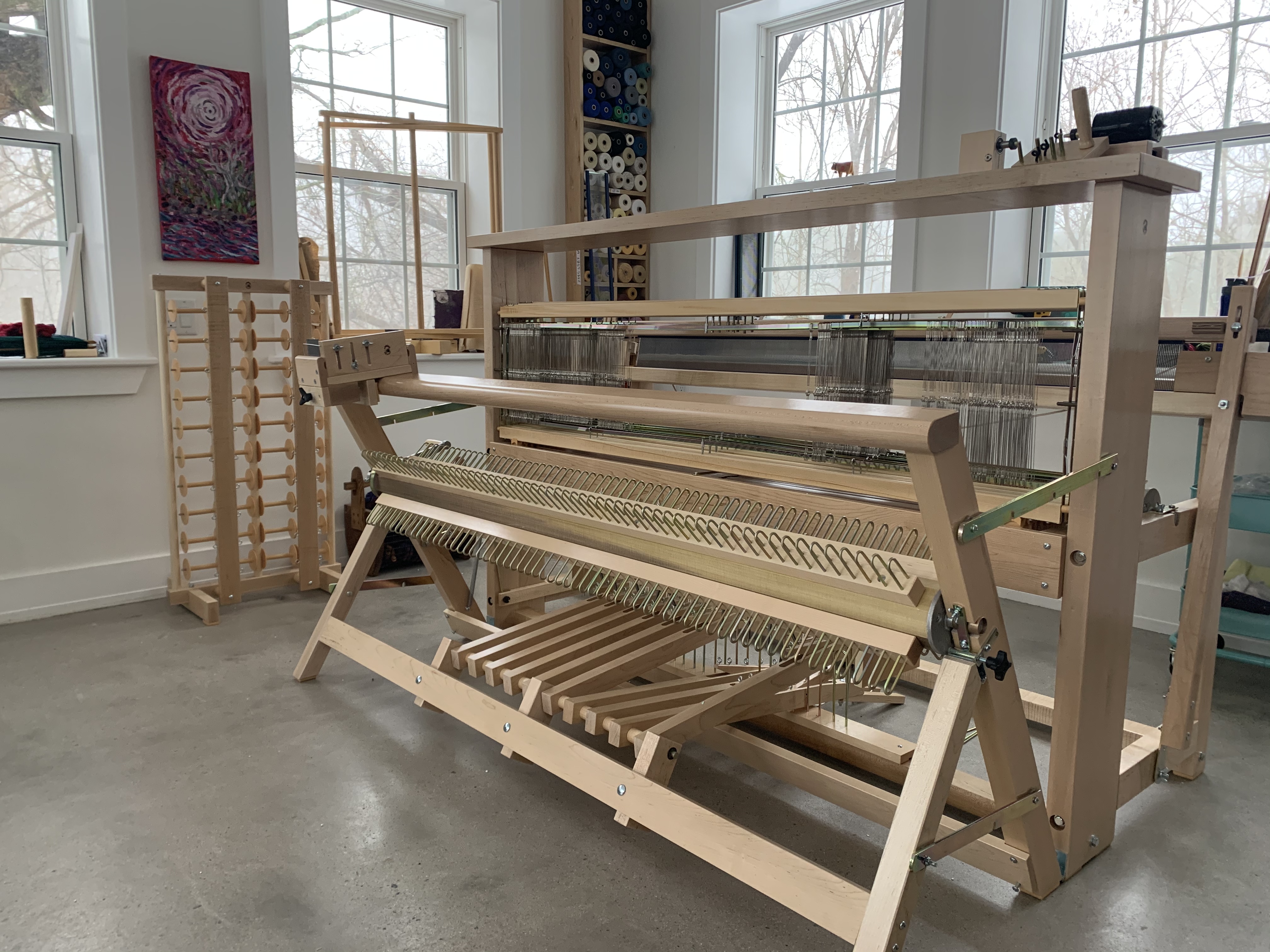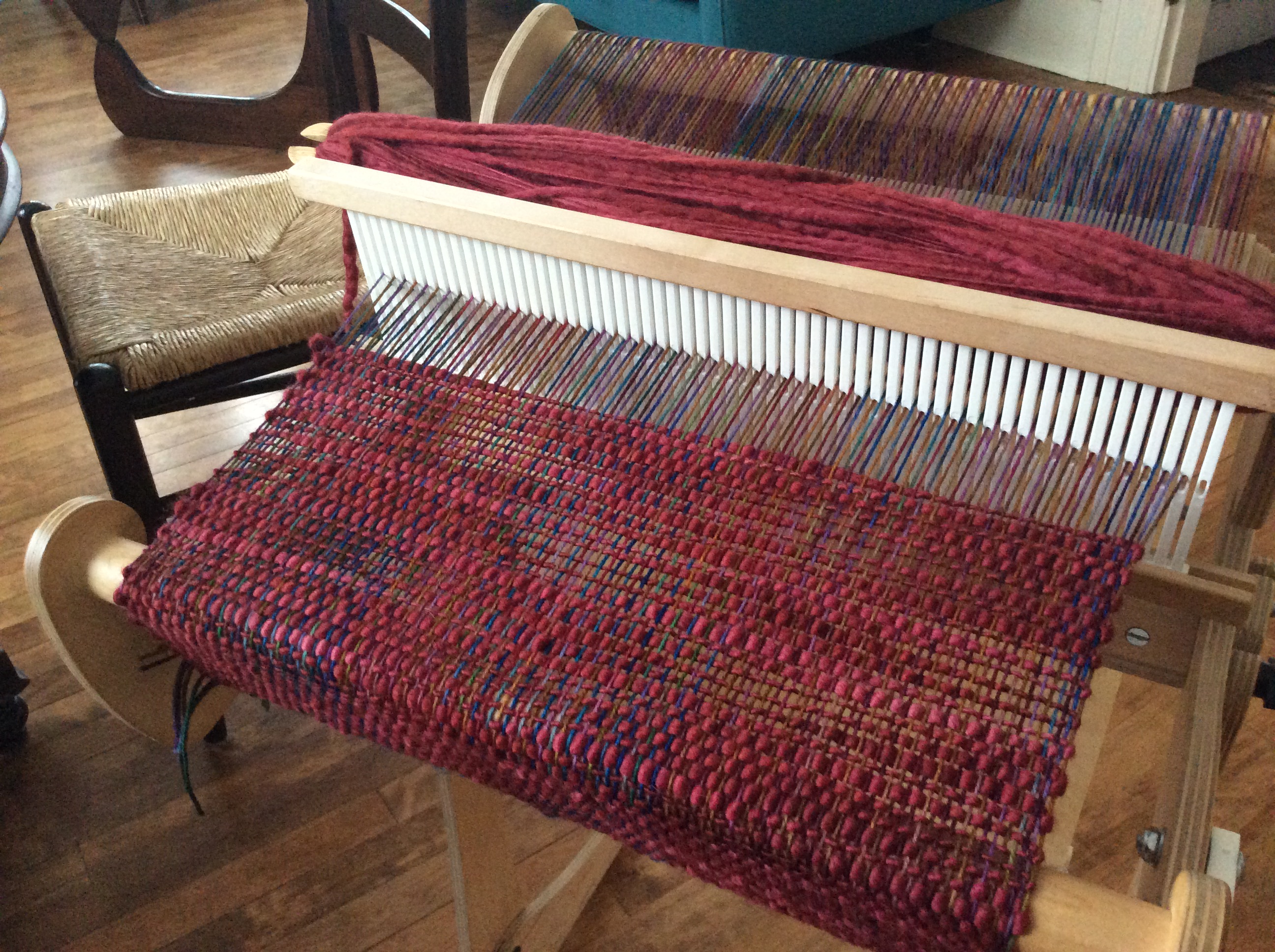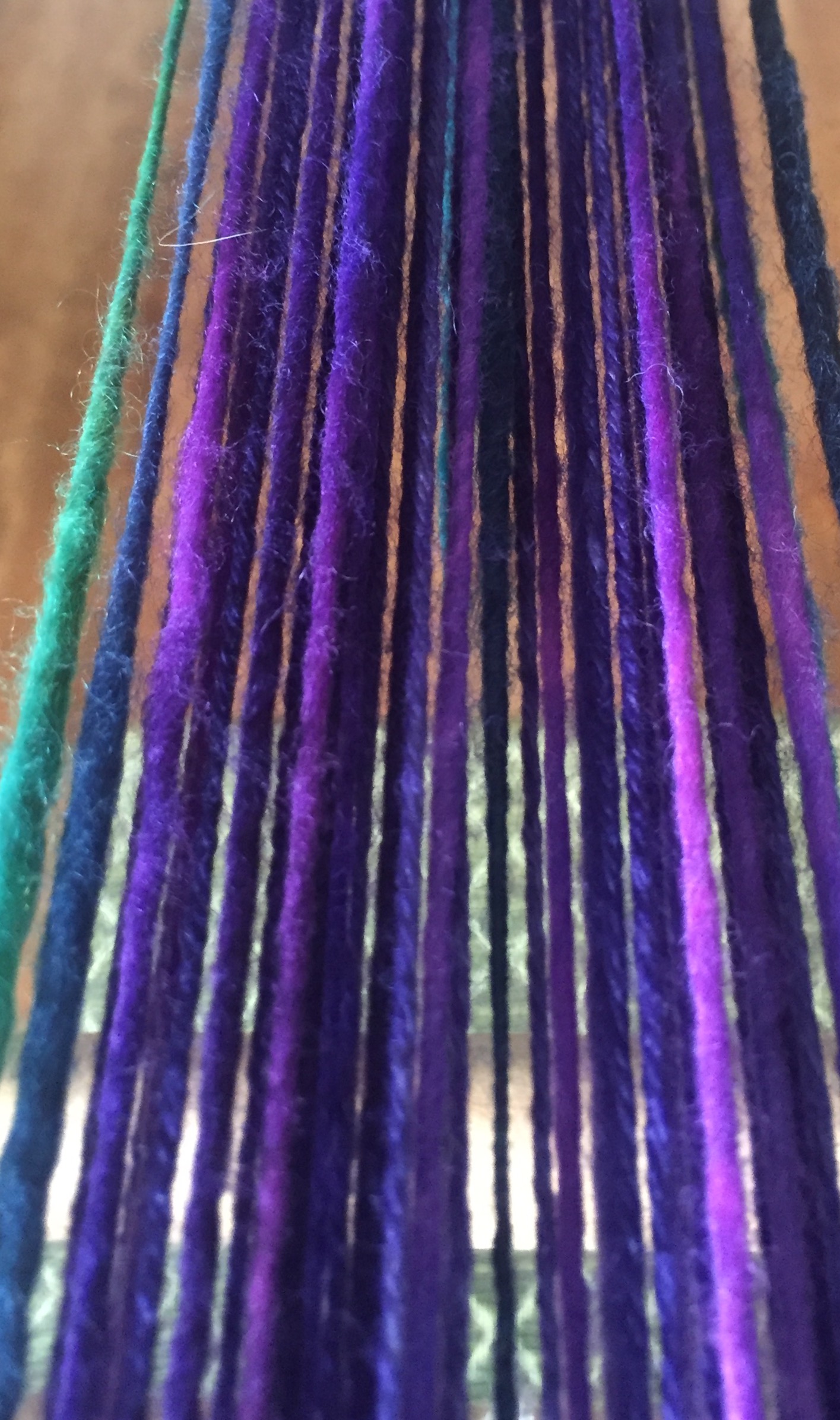Welcome to 2023!
This year marks my 10th as a weaver, wow time sure flies by. Since the day I first saw a loom being operated up close and fell in love instantly, much has changed but not my love of weaving and learning.
The past few years have been weird ones, for all of us really. Covid changed things for me (even though I managed to avoid it until just last autumn!). I went through a dry spell of sorts, what I was calling a bad case of Creative Ennui. You’d think that being forced to curtail public activities would have driven me into my studio, but it didn’t. I spent over a year not weaving for the most part; I just could not dredge up the interest or creative spark.

You’d think I’d look back at that time and think of it as dark days indeed, but I don’t. I read a lot, I got a dog, I spent a lot of time with my husband. I reorganized stuff in the house, read even more books, and just kind of let myself be. It allowed me to just…take a breath, which was exactly what I needed. I hadn’t even known that I was holding my breath until I let it out eventually.
Even though covid is still around and I’m still taking every precaution I know, things feel a bit more back to “normal” now. It is, I guess, the new normal. And I’m back in the studio much more often! Back, and refreshed, and being thoughtful about it.
For years my “Type A” tendencies (business) were at war with my creative and decidedly NOT-Type-A temperament (artist). I could not decide if I was a business or a hobby or some sort of weird hybrid. But what I realized over the past few years is that it doesn’t have to be either/or, you know? Commissions made me HAPPY when I got them (business), and then sucked all creative urges (artist) out of my system. Creating to please other people and their often inchoate ideas of what they wanted just stressed me out.
I know very few weavers who make a living with their work, and honestly – I don’t want to be one of them. What fills my soul is the craft, the planning, the tactile pleasure of fibre, the rhythm of the loom, and having a place of my own in which to do it. Taking breaks away from the studio are also necessary, I’m in the lucky position of not having to do this to make a living. I’m lucky if I what I make keeps me in enough fibre to make more. And I’m okay with that – really really okay with it.
What you see below is a gallery of things I made in the past while, just because I wanted to. Felt good.



















So this year, back in the studio and looking around at what I have, what I want to do, and how I want to do it, I’ve decided that this year will have two overarching themes –
1. zero waste, and
2. no commissioned pieces.
I have a LOT of fibre in the studio. Like most weavers I’m drawn to pretty fibre, and I buy a lot of it “just in case” for future projects. Sometimes there’s a price I can’t pass by, or a colour I can’t get out of my head. While I was trekking through my creative desert over the past few years, instead of using the materials, I started accumulating them. Maybe I thought that having more, or different, fibres would help me joggle out of my small crisis?
What it did, instead, was make me rethink what I was doing and why. So, I will be “shopping” from my own shelves for the rest of the year and will see what comes of it. Everyone who works with fibre has a few piles in their stash – stuff we love to use, colours we hate but bought for some reason now unknown, fibre we’re saving “for something special”, fibre we couldn’t pass up because of the price or opportunity….
So. I’m going to dip into all of it. I’m going to be profligate and enterprising and see this as an opportunity to make good use of what I have. It’s the weaving equivalent of using up the food that’s in your freezer, really. You never know what unexpected delights you will make from those forgotten things. And I hope it will make me think long and hard about how, for me, accumulation took over from creation.


So, that’s the “Zero Waste” portion of my year’s theme. What about the “No Commissions” part?
Well, as previously mentioned, commissions are for me a bit of a problem. I’m so happy to get one, but then I become paralyzed by them – I worry that the picture someone has in their head will not be matched by what I make. It stifles my urges to experiment, it makes me want to just get it done instead of enjoying the process.
I want to weave joy into every piece I make, and commissions just didn’t let me do it. I was never quite pleased with something, if I was weaving it with a sale in mind.
So, no commissions. I’m still going to be selling, don’t get me wrong here. But I’m going to make things and then put them up for sale – there are a few retails places I may be putting them in, but for the most part posting them on instagram will be how I offer what I’ve made.
Just as my studio is open by chance, so too will my creativity be. I’m good with it, and hope you will be too.
























 In fact, you can see it in Gandalf’s cloak, here. There are what look to be diagonal patterns in the fabric, all of which are the delightful collateral damage of the wet finishing process once you take something off the loom.
In fact, you can see it in Gandalf’s cloak, here. There are what look to be diagonal patterns in the fabric, all of which are the delightful collateral damage of the wet finishing process once you take something off the loom.


 I know I’m probably not the first fibre artist blogger to use the term. I know it’s a bit…obvious, but it’s also exactly what I’ve been doing.
I know I’m probably not the first fibre artist blogger to use the term. I know it’s a bit…obvious, but it’s also exactly what I’ve been doing.